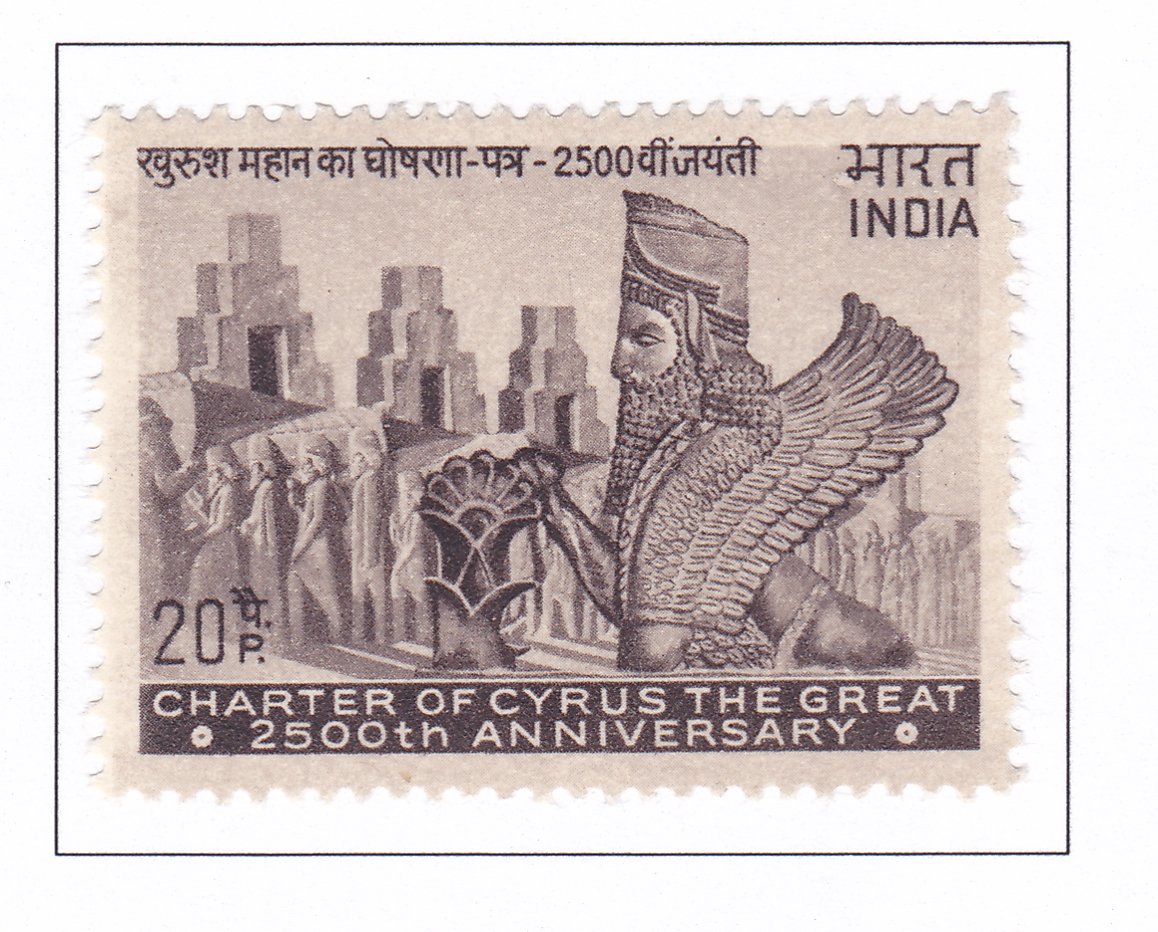Charter of Cyrus the Great

Technical Data
| Date of Issue | October 12, 1971 |
|---|---|
| Denomination | 20 nP |
| Quantity | 3,000,000 |
| Perforation | comb 13 |
| Printer | Security Printing Press, Nashik |
| Watermark | No Watermark |
| Colors | Blackish brown |
| Catalog Codes |
Michel IN 528 Stamp Number IN 544 Yvert et Tellier IN 327 Stanley Gibbons IN 642 |
| Themes | Anniversaries and Jubilees | Famous people | Kings |
Iran has a rich history, dating back almost five millennia, making it one of the oldest civilisations in the world. Situated at the crossroads of Asia and West Asia, Iran has served as a bridge between cultures, facilitating the exchange of ethnic groups, ideas, and techniques.
The emergence of Iran as a political and military power occurred in the sixth century B.C. under the Achaemenids. Cyrus the Great, crowned King of the Persians in 550 B.C., played a pivotal role in this rise to power. His military campaigns, including the conquest of Babylon in 538 B.C., were remarkable, but it was his progressive ideas that set him apart.
Cyrus is renowned for his principles of toleration and broadmindedness, which were enshrined in a Charter issued after the fall of Babylon. This Charter, preserved in the British Museum, emphasized freedom of religious worship and protection of religious shrines, setting new standards for human rights.
Throughout history, Cyrus the Great has been revered for his sense of justice and humanity. His countrymen regarded him as a father figure, reflecting his admirable qualities as a leader.
To commemorate the 2500th Anniversary of the Charter of Cyrus the Great, the Indian Posts & Telegraphs Department is honored to issue a stamp. The stamp features a winged animal with a human face, found in the Central Palace at Persepolis, the ancient Persian capital. The background depicts the stairway of the Central Palace, with Persian and Median nobles engaged in conversation. This stamp serves as a tribute to the legacy of Cyrus the Great and his contributions to the principles of human rights.
